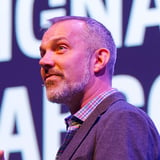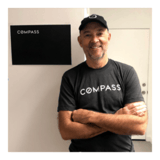Log in or create a free Rosenverse account to watch this video.
Log in Create free account100s of community videos are available to free members. Conference talks are generally available to Gold members.
Summary
In a world where change is constant and complexity is the norm, learning is the engine that drives great design. In this session, Jen explores how designers can move beyond just solving problems to enabling adaptation at multiple scales: individuals, teams, and organizations. Jen shares principles from complexity science and real-world practice to help you design the conditions for curiosity, reflection, and meaningful change – for your collaborators and customers alike. Walk away with a fresh lens on your role as a designer - that is, a mediator of collective learning. Take Aways: A mental model for approaching design in complex systems or volatile domains, shifting from control to curiosity, from solutions to sense making An understanding of the parallels in learning at individual, team, and organizational levels, and why that matters for your design practice Practical principles for creating the conditions where adaptive learning can thrive in your team, product, or organization Inspiration to reframe your role as a designer: not just solving problems, but enabling systems to learn, grow, and evolve
Key Insights
-
•
Complex systems lack linear cause-and-effect, making plans and roadmaps often ineffective.
-
•
Best practices can fail in complex systems because they assume stability and ignore context.
-
•
Learning is an emergent, fractal pattern visible at individual, team, and organizational scales.
-
•
In complexity, psychological safety and alignment emerge rather than can be directly engineered.
-
•
The Cynefin framework helps differentiate clear, complicated, complex, and chaotic systems.
-
•
Nudging or 'wiggling' parts of a system safely can reveal emergent behaviors and inform adaptation.
-
•
Reflection and learning happen in the moment and through interaction, not detached observation.
-
•
Framing learning as adaptation helps navigate unpredictable, interconnected human systems.
-
•
Coherence, where diverse parts make sense together, is more realistic than perfect alignment.
-
•
Supporting learning ecosystems involves creating fertile conditions, recognizing moments, and sustaining relational energy.
Notable Quotes
"Planning is essential, but plans are useless."
"Learning is the foundational design pattern of complex systems. It's emergent, relational and contextual."
"We don’t stand back to reflect, but we can do that reflecting in the moment."
"Best practice is past practice and context changes, so it’s no longer guaranteed to be effective."
"Psychological safety may not be something you can actively engineer; it emerges from conditions that make learning possible."
"Think about alignment versus coherence. Coherence means the system makes sense even if parts go different directions."
"Nudge to me now is much more about wiggle it and see what happens rather than expecting exact outcomes."
"Learning unfolds through encounters that disrupt our existing frames and invite transformation."
"Learning is fractal—self-similar at different scales from individuals to organizations."
"You can’t drive learning like a project plan, but you can create conditions where learning becomes more likely."
Or choose a question:
















More Videos

"Evals are like a way to define what good looks like."
Peter Van DijckHands-on AI #1: Let’s write your first AI eval
October 8, 2025

"The last thing you want to do is get it right and end up with it being wrong."
Harry Max Jim MeyerPrioritization for Leaders (2nd of 3 seminars)
June 27, 2024

"Model companies are students in a classroom wanting good points—they’re happy to run external expert evals to improve."
Peter Van DijckHands-on AI #2: Understanding evals: LLM as a Judge
October 15, 2025

"Systems are shaped in the mundane, the insignificant, and the extraordinary every day."
Josina VinkNavigating the pitfalls of systems thinking in service design
December 4, 2024

"We created a simple WordPress site so all corners of the business could contribute and share insights, breaking down silos."
Catherine DubutBridging Physical and Digital Spaces: Approaches to Retail Service Design
March 18, 2021

"We’re not doing this for the good of research. Research is merely a means to an end."
Andy WarrUnder My (Research) Umbrella: The Benefits and Challenges of Building a Unified Insights Function
March 25, 2024

"Hiring local talent embeds lived experience directly in government decision making."
Chris Govias Mai-Ling Garcia Emily LessardPerspectives on Civic Design
September 23, 2021

"Wireframes are like an idea in time you can use for conversation."
Billy CarlsonPrinciples of Team Wireframing
October 2, 2023

"With selfie pay, you take a picture, blink to prove it’s you alive, and authenticate in-app seamlessly and securely."
Karen PascoeDeveloping Experience Teams and Talent in the Enterprise
June 8, 2016
















